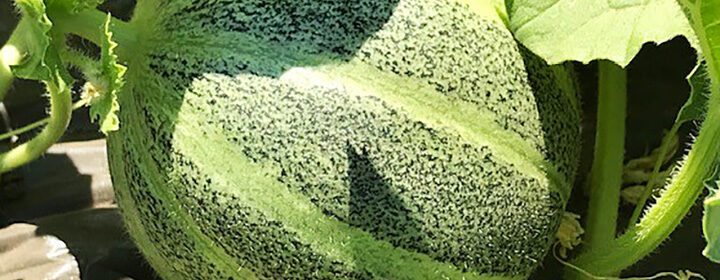Aug. 16 Column: Ripen Tomatoes and Other Warm-Season Crops

Here we are in the middle of August (already?!) and many of us are thinking ahead to the end of the growing season. A top priority for vegetable gardeners is to ripen tomatoes, melon and winter squash before the frosts get here. That’s the subject of today’s garden column, which you can read in The Spokesman-Review: Three-step pruning process will ripen green tomatoes. Or you can read the text of my column below my video.
Have you got a lot of green tomatoes right now? I sure do. I keep blaming it on the cold and excessively wet spring we had here in the Inland Northwest. In my column and this week’s video, I show you how to get them to ripen in time. I also share tips on getting your melons and winter squash to mature. I’ve used these methods for years and they work like a charm!
Speaking of my newest video, here it is:
Ripen Tomatoes column
by Susan Mulvihill
Allow me to apologize in advance for the following statement: Fall is coming. Those three words cause fear and dread in vegetable gardeners everywhere. Now is the time to be proactive to ensure an abundant harvest before the weather gets cold.
In the Inland Northwest, our average first frost date is around Sept. 15. That is a little over a month from now. If your thoughts just turned to the green tomatoes, hard melons and immature winter squash in your garden, I have some suggestions to remedy those issues.
Ordinarily, tomatoes do really well in this region but our cold, wet spring set them back a bit. I hope you’re at least seeing a lot of green tomatoes. Here is my three-step pruning process to get as many ripe tomatoes as possible:
As soon as you finish reading this column, head out to the tomato patch with a pair of hand pruners. Start by reassuring your plants that you know what you’re doing and that what’s about to happen is for their own good.
The purpose of the first pruning is to remove some of the long branches near the top of each plant while being careful not to clip off any full-size tomatoes. There is no point in letting plants continue to grow and flower when there’s not enough time left in the season for new little tomatoes to mature and ripen.
Ten days after that, trim back any lanky, new growth that has occurred in the interim. You might notice some of the green tomatoes are already changing to a more mature color. Be sure to prune right above any fruits that look like they’re close to a mature size. This is also the time to cut back on the amount of water your tomato beds get by 50 percent.
In the first week of September, your pruning activities will be more drastic. Remove any excess foliage around developing tomatoes so they will receive as much sunlight as possible. Turn off the water to the beds as well. This stresses the plants so they use their energy to ripen the majority of the green tomatoes.
If you are really concerned your plants aren’t getting the message, try this: cut straight down through the roots with a shovel in a half-circle a few inches from the main stem. Once again, this will stress the plants.
Don’t despair when the danger of frost is imminent. Pick all of your full-size green tomatoes and bring them indoors. Place them on a sheet of newspaper – being careful to space them so they don’t touch – and cover them with another sheet of paper. They will ripen quickly from being in the dark.
The concept is similar for ripening immature melons and winter squash. Head out to your melon or squash patch today. Locate the fruits that are large enough to mature before the end of the season.
At this point, you have two options. The first involves trimming the vines just past the location of the fruits; this encourages them to ripen. The second option requires you to be diligent about pinching off any new flowers that appear and also removing any little fruits that won’t mature in time.
While both methods work well, I think the latter is more ideal because you’re leaving plenty of foliage on the vines to conduct photosynthesis. That way, the plants will have the energy to ripen the last of your harvest.
I hope you will be rewarded with a delicious bounty of homegrown produce.
Contact Susan Mulvihill at Susan@susansinthegarden.com. Watch this week’s “Everyone Can Grow a Garden” video at youtube.com/susansinthegarden.

